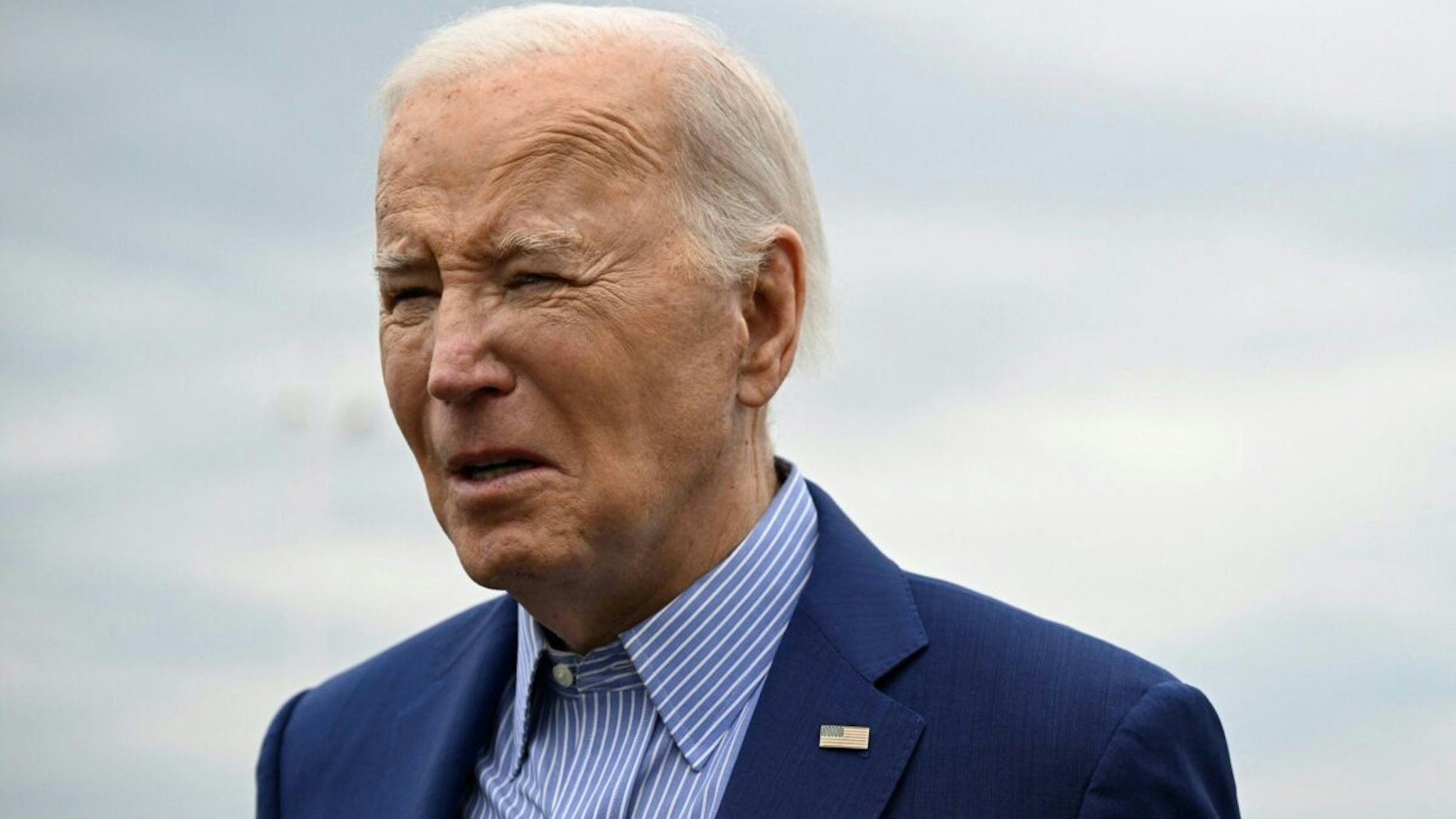 ANDREW CABALLERO-REYNOLDS/AFP via Getty Images
ANDREW CABALLERO-REYNOLDS/AFP via Getty Images
In a massive decision handed down that will limit the power of unelected agencies in the executive branch to interpret laws that Congress had left ambiguous, and a power Democratic administrations have used to impose additional regulations, the Supreme Court ruled 6-3 to overturn the 1984 ruling in Chevron v. Natural Resources Defense Council.
“It authorized a massive shift in power from Congress and the courts to the president,” Henry Olsen noted of the Chevron decision. “Most of the administrative agencies subject to Chevron are run by presidential appointments. These officials might have subject matter expertise, but their knowledge does not negate the fact that they make inherently political judgments, which the Constitution envisioned would be made by elected legislators.”
“Under Chevron, a statutory ambiguity, no matter why it is there, becomes a license authorizing an agency to change positions as much as it likes. Chevron accordingly has undermined the very ‘rule of law’ values that stare decisis exists to secure,” Ed Whelan pointed out.
“During Barack Obama’s presidency … courts increasingly relied on Chevron to uphold a slew of new, progressive regulations,” Slate stated in an article titled, “The Supreme Court Is About to Seize Way More Power From Democratic Presidents.”
The case in which the Court overturned the 1984 ruling was Loper Bright Enterprises v. Raimondo. The plaintiffs, who are fishermen, sued Commerce Secretary Gina Raimondo. A subagency of the Commerce Department, the National Marine Fisheries Service, forced the fishermen to “pay the salaries of the federal inspectors that federal law forces them to carry aboard their boats,” the Heritage Foundation explained, adding that the fishermen claimed there was no law that the National Marine Fisheries Service could cite giving them the right to force them to do so.
The National Fisheries Service cited the Chevron decision, saying that the law’s silence gave the agency its right to speak. As a result, inspectors’ salaries ought to be paid by fishermen.
The U.S. Court of Appeals for the District of Columbia Circuit ruled for the Fisheries Service. But in the petition for writ of certiorari to the Supreme Court, the plaintiffs asked, “Whether the Court should overrule Chevron or at least clarify that statutory silence concerning controversial powers expressly but narrowly granted elsewhere in the statute does not constitute an ambiguity requiring deference to the agency.”
“Under the Chevron doctrine, courts have sometimes been required to defer to ‘permissible agency interpretations of the statutes those agencies administer—even when a reviewing court reads the statute differently,” the Supreme Court stated. “In each case below, the reviewing courts applied Chevron’s framework to resolve in favor of the Government challenges by petitioners to a rule promulgated by the National Marine Fisheries Service pursuant to the Magnuson-Stevens Act, which incorporates the Administrative Procedure Act (APA).”
“The Administrative Procedure Act requires courts to exercise their independent judgment in deciding whether an agency has acted within its statutory authority, and courts may not defer to an agency interpretation of the law simply because a statute is ambiguous; Chevron is overruled,” the Court ruled.
CLICK HERE TO GET THE DAILYWIRE+ APP
“Perhaps most fundamentally, Chevron’s presumption is misguided because agencies have no special competence in resolving statutory ambiguities. Courts do. The Framers anticipated that courts would often confront statutory ambiguities and expected that courts would resolve them by exercising independent legal judgment. Chevron gravely erred in concluding that the inquiry is fundamentally different just because an administrative interpretation is in play. The very point of the traditional tools of statutory construction is to resolve statutory ambiguities. That is no less true when the ambiguity is about the scope of an agency’s own power—perhaps the occasion on which abdication in favor of the agency is least appropriate,” the Court wrote.
“Today’s decision fixes the decades-long error of handing vague and broad powers to unelected and unaccountable bureaucrats,” House Judiciary Committee Chairman Jim Jordan (R-OH) responded after the decision was released. “The Supreme Court’s decision restores the Constitutional power to write the law to where it should be—with the elected representatives of the American people.”
Source link

